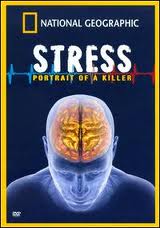“Yoga isn’t for me, I’m not flexible.”
“Isn’t yoga a religion?”
“It’s too spiritual for me, I’m not into chanting.”
“I don’t understand the other language the teacher uses when she talks about poses.”
Yep. Been there, heard that. I get it. Anything new is scary. And when we’re trying to reduce our stress, the last thing we want to try is something that actually causes us additional stress. So here are some quick yoga FAQs, courtesy of Yoga Journal, to help you understand a bit more about this ancient practice we call yoga.
What is yoga?
The word yoga, from the Sanskrit word yuj means to yoke or bind and is often interpreted as "union" or a method of discipline.
The Indian sage Patanjali is believed to have collated the practice of yoga into the Yoga Sutra an estimated 2,000 years ago. The Sutra is a collection of 195 statements that serves as a philosophical guidebook for most of the yoga that is practiced today. It also outlines eight limbs of yoga: the yamas (restraints),niyamas (observances), asana (postures), pPranayama(breathing), pratyahara (withdrawal of senses), dharana(concentration), dhyani (meditation), and samadhi(absorption). As we explore these eight limbs, we begin by refining our behavior in the outer world, and then we focus inwardly until we reach samadhi (liberation, enlightenment).
Today most people practicing yoga are engaged in the third limb, asana, which is a program of physical postures designed to purify the body and provide the physical strength and stamina required for long periods of meditation.
What does OM mean?
Om is a mantra, or vibration, that is traditionally chanted at the beginning and end of yoga sessions. It is said to be the sound of the universe. What does that mean?
Somehow the ancient yogis knew what scientists today are telling us—that the entire universe is moving. Nothing is ever solid or still. Everything that exists pulsates, creating a rhythmic vibration that the ancient yogis acknowledged with the sound of Om. We may not always be aware of this sound in our daily lives, but we can hear it in the rustling of the autumn leaves, the waves on the shore, the inside of a seashell.
Chanting Om allows us to recognize our experience as a reflection of how the whole universe moves—the setting sun, the rising moon, the ebb and flow of the tides, the beating of our hearts. As we chant Om, it takes us for a ride on this universal movement, through our breath, our awareness, and our physical energy, and we begin to sense a bigger connection that is both uplifting and soothing.
Do I have to be a vegetarian to practice yoga?
The first principle of yoga philosophy is ahimsa, which means nonharming to self and others. Some people interpret this to include not eating animal products. There is debate about this in the yoga community—I believe that it is a personal decision that everyone has to make for themselves. If you are considering becoming a vegetarian, be sure to take into account your personal health issues as well how your choices will affect those with whom you live. Being a vegetarian should not be something that you impose on others—that kind of aggressive action in itself is not an expression of ahimsa.
How many times a week do I have to practice?
Yoga is amazing—even if you only practice for one hour a week, you will experience the benefits of the practice. If you can do more than that, you will certainly experience more benefits. I suggest starting with two or three times a week, for an hour or an hour and a half each time. If you can only do 20 minutes per session, that's fine too. Don't let time constraints or unrealistic goals be an obstacle—do what you can and don't worry about it. You will likely find that after awhile your desire to practice expands naturally and you will find yourself doing more and more.
How is yoga different from other forms of fitness?
Unlike stretching or fitness, yoga is more than just physical postures. Patanjali's eight-fold path illustrates how the physical practice is just one aspect of yoga. Even within the physical practice, yoga is unique because we connect the movement of the body and the fluctuations of the mind to the rhythm of our breath. Connecting the mind, body, and breath helps us to direct our attention inward. Through this process of inward attention, we learn to recognize our habitual thought patterns without labeling them, judging them, or trying to change them. We become more aware of our experiences from moment to moment. The awareness that we cultivate is what makes yoga a practice, rather than a task or a goal to be completed. Your body will most likely become much more flexible by doing yoga, and so will your mind.
Is yoga a religion?
Yoga is not a religion. It is a philosophy that began in India an estimated 5,000 years ago. The father of classical ashtanga yoga (the eight-limbed path, not to be confused with Sri K. Pattabhi Jois' Ashtanga yoga) is said to be Patanjali, who wrote the Yoga Sutra. These scriptures provide a framework for spiritual growth and mastery over the physical and mental body. Yoga sometimes interweaves other philosophies such as Hinduism or Buddhism, but it is not necessary to study those paths in order to practice or study yoga.
Can I practice yoga if I’m not flexible?
Yes! You are a perfect candidate for yoga. Many people think that they need to be flexible to begin yoga, but that's a little bit like thinking that you need to be able to play tennis in order to take tennis lessons. Come as you are and you will find that yoga practice will help you become more flexible.
Ok, I’ll try a class. What do I need?
All you really need to begin practicing yoga is your body, your mind, and a bit of curiosity. But it is also helpful to have a pair of sweat pants, leggings, or shorts, and a t-shirt that's not too baggy. No special footgear is required because you will be barefoot. It's nice to bring a towel to class with you. As your practice develops you might want to buy your own yoga mat, but most studios will have mats and other props available for you
*full article can be found here
Xo b


 RSS Feed
RSS Feed
